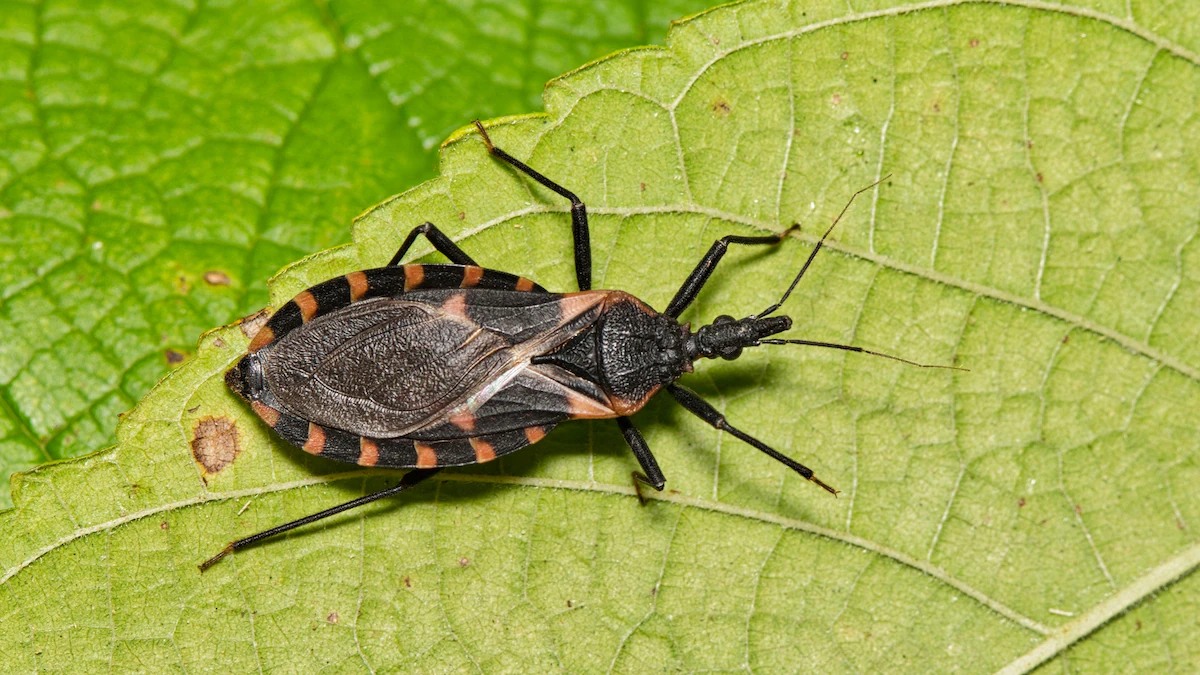
The “kissing bug” disease is spreading—and don’t be fooled by the charming name. Also known as Chagas disease, it is a tropical illness caused by the parasite Trypanosoma cruzi and spread by insects known as “kissing bugs” because they mostly bite around the mouth or eyes at night.
The disease these bugs carry should be considered endemic in the United States, according to a report published by the U.S. Centers for Disease Control and Prevention’s Emerging Infectious Diseases journal. Once thought to be confined to Central and South America, the disease has quietly taken root in the U.S. and is spreading in 32 states from California to Maryland.
If untreated, Chagas disease can cause lifelong heart problems and even death. More worrisomely, it often starts with little to no symptoms. “That’s the danger in this disease. Oftentimes, symptoms do not arise until permanent damage has already been done,” says University of Florida College of Medicine researcher Norman L. Beatty. Beatty was a lead author on the report published in the CDC’s journal.
Here’s what you need to know about how it spreads, what you can do to protect yourself—and why Beatty thinks we need more research investment for Chagas disease.
What is Chagas disease?
About eight million people worldwide, including an estimated 280,000 people in the U.S., have Chagas disease, according to the CDC.
The parasite that causes Chagas disease can be found living 140 species of kissing bugs, including Triatoma sanguisuga and Triatoma gerstaeckeri, that in turn pass it off to a new host that they encounter.
These bugs are found throughout southern portions of the U.S., Central America, and South America. Chagas disease transmission typically occurs during warmer months “typically at the end of spring, moving into summer,” according to Beatty.
There are two phases to Chagas disease, with initial signs of infection appearing shortly after a bite and lasting weeks or months. Acute symptoms can include swelling at the infection site, fever, eyelid swelling, and loss of appetite, according to the Mayo Clinic, but—concerningly—a bite may not produce any symptoms, allowing infections to go unnoticed.
If untreated, Chagas disease can enter a chronic phase, which Beatty calls a “silent” infection where the parasites are hiding in the body—primarily in the heart or digestive muscles, according to the World Health Organization. They can potentially remain for decades after an initial infection.
Beatty says the most serious complication is Chagas heart disease. The parasite targets cardiomyocytes, the muscle cells of the heart, and weakens the entire organ.
“The parasite goes inside of the heart muscle cells and hijacks its machinery to allow it to survive inside of the cell,” Beatty explains. “The cell doesn’t recognize that the parasite is there for years, until there is a chronic inflammatory response, fibrosis, some scarring, and sometimes fatal arrhythmia.”
Globally over 10,000 people with Chagas disease experience sudden cardiac death each year.
How does Chagas disease spread?
The parasite behind Chagas disease can be transmitted several ways. The two most common are from either the bite or exposure to the feces of triatomine bugs.
These bugs are typically attracted to warm blooded creatures and as they feed on blood, they will defecate parasitic feces that can infect the host through the eyes, mouth, or an open wound.
(Learning about vector-borne diseases? Here’s everything to know about malaria.)
Humans aren’t the only host for this disease.
“We found in Florida that our insects are attracted to possums, but they’re also attracted to humans, dogs, ground dwelling frogs, and lizards,” Beatty says. “It really depends on the species on what they’re attracted to the most.”
“Kissing bugs” are nocturnal, normally hiding during the day and feeding on animal and human blood while the host sleeps.
They mostly bite around the mouth or eyes of a sleeping person because it’s easily accessible and exposed skin, however they will bite anywhere on the body that they can access.
Chagas disease does not spread from person to person the way a respiratory virus spreads through the air. People could become infected by eating uncooked food containing stool from bugs infected with the parasite, receiving infected blood or organ transplants, or being near infected wild animals.
A triatomine bug can also bite an infected host, become a carrier for the parasite, and go on to infect another human.
How to protect yourself from Chagas disease
Beatty says the best way to prevent Chagas disease is to prevent the bugs from entering your home.
“We want to start thinking about an integrative pest management strategy based off of each region we find these bugs in,” he explains.
Decluttering can help prevent North American kissing bugs, also known as Triatoma sanguisuga, from infesting a home. A 2023 study found that stacked firewood, nonfunctioning automobiles, bricks, blocks, and pipes, can provide nesting places for wild animals and attract North American kissing bugs. The study found that rodent nests, fox dens, armadillo burrows, and opossum latrines are also particularly attractive to kissing bugs.
(Why isn’t more attention paid to Chagas disease?)
Beatty says he hopes that the new endemic label will increase awareness of the disease and motivate more robust data collection.
“No one has done real rigorous research on whether these insects pose much of a threat to humans, but we just know that people are getting infected,” he says. “We’ve got to investigate this more, because it’s such a silent killer.”



